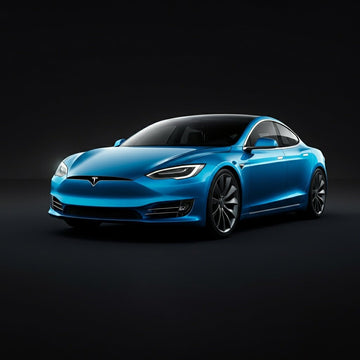Tesla's Blueprint for Autonomy: Redundancy, Teleoperators, Hubs
Tesla has long been at the forefront of automotive innovation, particularly when it comes to self-driving technology. Recently, the company unveiled its comprehensive strategy for achieving full autonomy, which hinges on three key components: redundancy, teleoperators, and dedicated hubs.
Understanding Redundancy in Autonomous Systems
Redundancy is a cornerstone of Tesla's approach to autonomy. In critical systems, redundancy ensures that there are backup components that can take over if the primary system fails. For Tesla vehicles, this means implementing multiple sensors and processing systems that work in tandem to ensure safe navigation.
According to Tesla's Chief Engineer, Colin Campbell, “Our goal is to make self-driving as reliable as possible, which is why we invest heavily in redundant systems.” This commitment to safety reflects an understanding that autonomous driving is not just about technology but also about building trust with consumers.
The Role of Teleoperators
Another innovative aspect of Tesla's roadmap is the integration of teleoperators—human operators who can remotely take control of a vehicle when necessary. This system acts as an additional safety net, allowing for human intervention in complex or unforeseen situations that the AI may not handle effectively.
This teleoperation capability is particularly crucial in urban environments where unpredictable factors come into play. As Elon Musk stated in a recent interview, “We want to ensure that even in the most challenging scenarios, there is a human who can step in if needed.”
Establishing Dedicated Hubs
The concept of dedicated hubs is also integral to Tesla's vision for the future of autonomous driving. These hubs would serve as centralized locations where vehicles can be summoned, parked, and managed. This not only streamlines operations but also enhances the efficiency of the self-driving fleet.
By creating these hubs, Tesla aims to optimize routes and reduce congestion, effectively transforming urban transportation. As cities grapple with the challenges of traffic and pollution, Tesla's hub strategy could offer a viable solution.
Statistical Insights and Market Implications
As of now, Tesla's self-driving fleet has logged over 100 million miles in real-world conditions. This extensive data collection is invaluable for refining algorithms and enhancing the overall safety of the vehicles. Furthermore, analysts predict that advancements in autonomous technology could contribute to a 30% reduction in traffic accidents, highlighting the potential societal benefits.
Key Takeaways
- Tesla's autonomy strategy focuses on redundancy, teleoperators, and dedicated hubs.
- Redundancy ensures safety and reliability in autonomous systems.
- Teleoperators provide a human safety net in complex scenarios.
- Dedicated hubs enhance operational efficiency and urban transportation.
- Real-world data collection is crucial for improving self-driving technology.
Conclusion
Tesla’s blueprint for autonomy reflects a thoughtful approach to one of the most transformative changes in transportation. By emphasizing safety through redundancy, leveraging human oversight with teleoperators, and optimizing vehicle management through dedicated hubs, Tesla is poised to lead the way in the autonomous vehicle revolution. As the company continues to innovate, the implications for consumers, cities, and the environment are profound. The journey towards full autonomy is undoubtedly complex, but with Tesla’s strategic initiatives, it seems a step closer each day.










